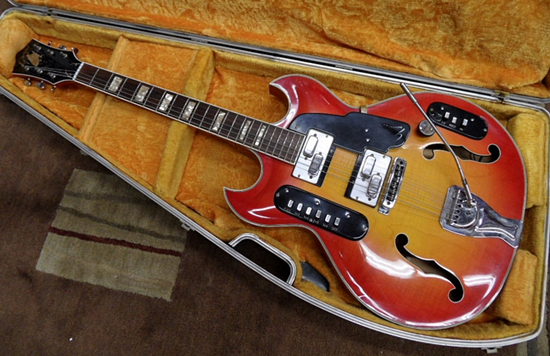
The guitar brand name “Goya” existed from the mid 1950’s to 1996. Nylon and steel string acoustic and acoustic/electric guitars, hollow body electric guitars, solidbody electric guitars and basses, thinline electric archtops guitars, banjos, mandolins and amplifiers. Sparkle plastic covered Model 80 (ESP24 Standard) and Model 90 (EDP46) hollowbody electric “Les Pauls” (with replaceable pickup assemblies) – made by Hagstrom – introduced mid 1959. These are relatively rare.
Goya was purchased by Avnet in 1966, and continued to import instruments such as the Rangemaster in 1967. By the late 1960’s, electric solidbody guitars and basses were then being built in Italy. The vibrato bar, however, was provided by another Goya supplier, the Hagstrom company of Sweden. It has also been suggested that Italian guitar maker Galanti made the Goya “Panther” models. The Goya Panther and the Galanti guitars look nearly identical.
This cherryburst Rangemaster Model 109R Goya guitar was made by the “Polverini Brothers” of Italy (not by EKO as previously thought) in the late 1960’s. The multi control panels that were common with Italian instruments from that era, include a master volume next to three tone options, low, medium and high. The upper controls are for pickup selection, as the pickups are split into 3+3 x 2. So the controls are: 1+2, 1+4, 2+3, 3+4, off. Pretty cool!
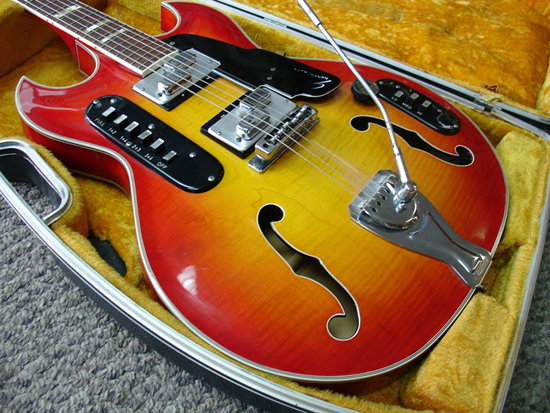
Vintage 1967 Goya Rangemaster 109R Electric Guitar
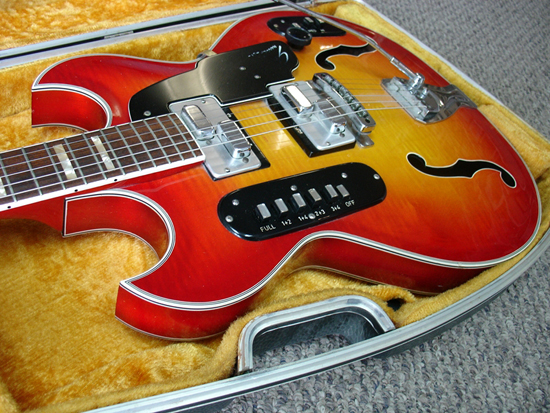
Vintage 1967 Goya Rangemaster 109R Electric Guitar
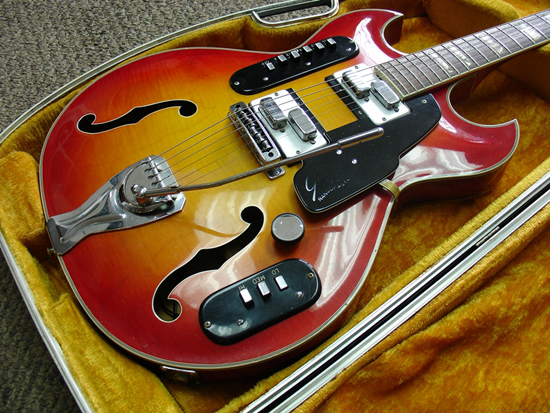
Vintage 1967 Goya Rangemaster 109R Electric Guitar
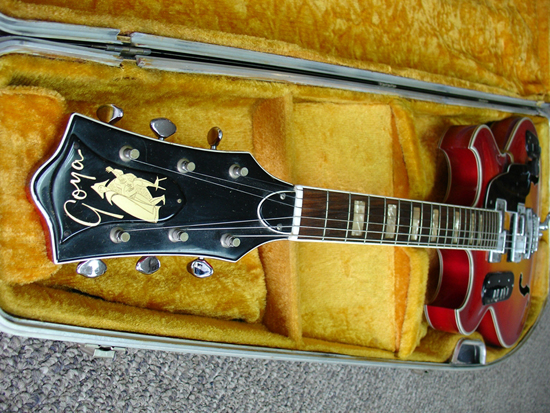
Vintage 1967 Goya Rangemaster 109R Electric Guitar
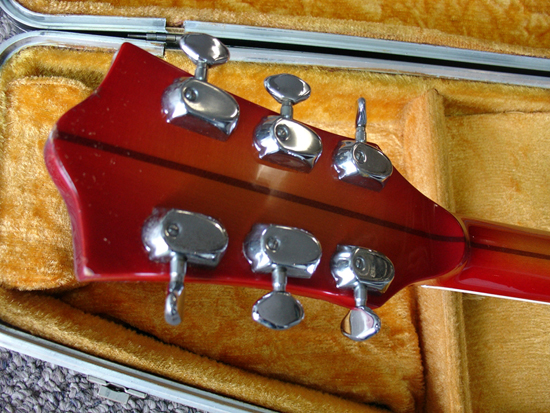
Vintage 1967 Goya Rangemaster 109R Electric Guitar
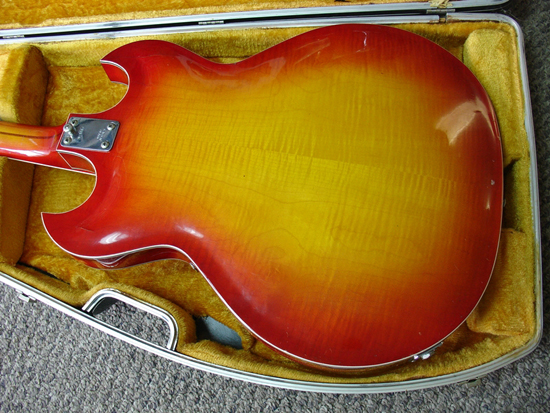
Vintage 1967 Goya Rangemaster 109R Electric Guitar
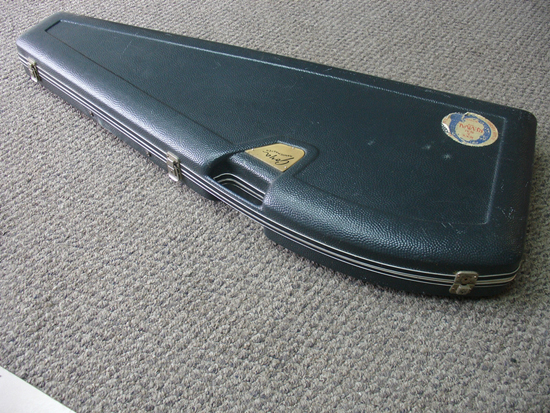
Vintage 1967 Goya Rangemaster 109R Electric Guitar
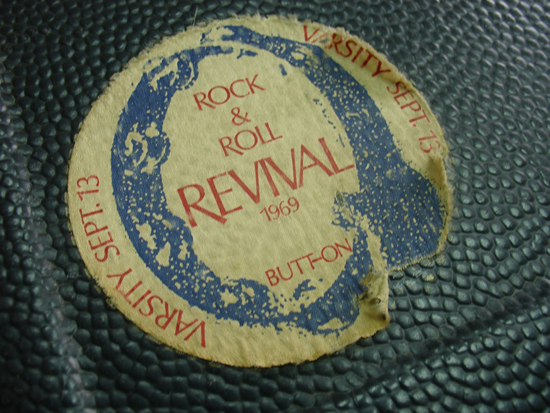
Vintage 1967 Goya Rangemaster 109R Electric Guitar
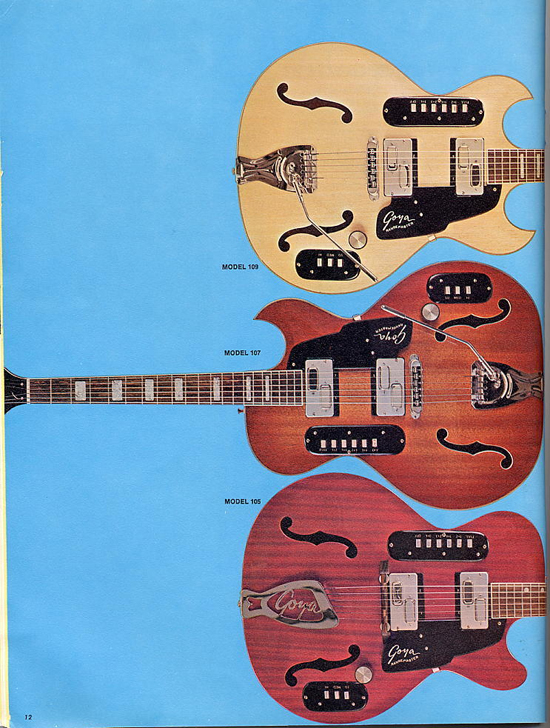
Vintage 1967 Goya Rangemaster 109R Electric Guitar
This model is shown on page 12 and 13 of the 1967 Goya Guitar Catalog in a blonde finish.

Those vintage guitars are works of art. Why I didn’t purchase one in the 60’s is a complete mystery to myself.
Jack Walsh’s wonderfully informative Goya Guitars website (that I donated materials to) is incorrect on the provenance of this fine guitar being “the Polverini Brothers.” It was actually built by Zerosette of Italy, as seen from the tell-tale “dropped” f-holes:
http://www.fetishguitars.com/index/zerosette.html
The blond version is the signature guitar of Local Natives frontman Taylor Rice:
http://rogerkisby.photoshelter.com/image/I00007zIzCL7UTHc
http://cache2.asset-cache.net/xc/120582611.jpg?v=1&c=IWSAsset&k=2&d=77BFBA49EF878921E86F5CE8BE5D78FB88C18BD353AAAECD2CD98C281585D25EDF23D0D0D3146775F06BF04B24B4128C
Thanks for posting the photos; it’s gorgeous! I’ve owned and restored several of these, and it’s so rare to see one with the finish in such great (uncracked) shape!
I own a Goya Rangemaster Model 105 with the original case. What is the value of one of these?
My first impression was also that the Rangemaster was made probably made by EKO as the excellent finish and overall design reminds me of the “Beatle” bass guitar produced by Ecko in the late 60s and early 70s (The bass player in our South Florida 60s garage band; “The Kegs” had one). The unique design and hi-quality workmanship is evident, even by just examining the photographs.
Thanks for a great article.
I have the same model from 1967 in cherry red , its a quirky guitar with a lovely sound and some outsanding features love the push and turn trem bar the split pick ups give you loads of options and the tone B M T switches give a lovely variation. It has a very slimline kneck and a slimline body that I think has tressle block inside as it does not feedback at high volume or with a bit of oversrive. It certainly gets attention. One drawback the case is awful to carry and cuts into your hands. Mine came with the original strap and strings after a tech set it all up it now plays like a dream a cross between a strat sound and a hollowbody. Surf sounds cool on it and rockabilly and on power blues it really growls. Having a 45 year old guitar Ive not taken it gigging yet as I worry about accidents as live music get guitars dings and accidents happen. However I will soon as I want to drive it hard live to find out its true sound full on, cant do that at home the Mrs would go totally mental! 🙂
$700-$1500
I have the blue now faded to green solid body version of this. An interesting anomaly is when you select split pickups setting (bridge treble side and neck bridge side or bridge bass side and neck treble side) and then play the d or g strings and bend them, a volume drop occurs. I guess because the these strings get out of the magnetic field range of the pickup setting.
salve sono la proprietaria di una goyz rangemaster 109R con custodia, volevo venderla ad un appassionato di chitarre vintage.
I would love to buy this guitar. I had one in 1967 and as the music / bands progressed I traded it in for my 1st Les Paul. I would love to have this guitar back. Is this guitar for sale ?
Nice sticker on that case, that was a historic show, remember it well.
I have the same guitar good condition. Made in Italy with Goya carry case. How much would someone buy this for
I have this guitar, anyone have the diagram?
Hi, I bought this guitar Goya Rangemaster at a garage sale, and I would fix it, does not sound when connected, I opened it and found many loose cables, the diagram I have searched and can not find it. you or someone have some photos of the circuit diagram or who can help me? I greatly appreciate it, thanks
I have just fix a Goya Rangemaster with same problem. Have noe circuit diagram but can send you photos of the cables.
I have one just like it..seral number 3680 if anyone is interested in buying it for a fair price.. email me nomad18_4@yahoo.com
Looking for tremolo for my 1967 goya rangemaster. Hitting lot of walls on this. Help if you can.
I got one of these guitars…It is in pretty good original shape…mine definitely looks a perfect match to the 1967 Goya Rangemaster….Unfortunately I don’t play it, I inherited it…I dont know the value of it….anyone interested for it for a fair price, let me know
Hi Harold, Where are you based? I might be interested
Hi Harold, I might be interested – whereabouts are you based?
Hallo zusammen,
ich habe eine Goya Rangemaster R 109 B.
Ich wollte den Tremolohebel wechseln,aber der bewegt sich nicht.So wie ich das sehe,hat der doch einen Bajonettverschluß oder Nicht?